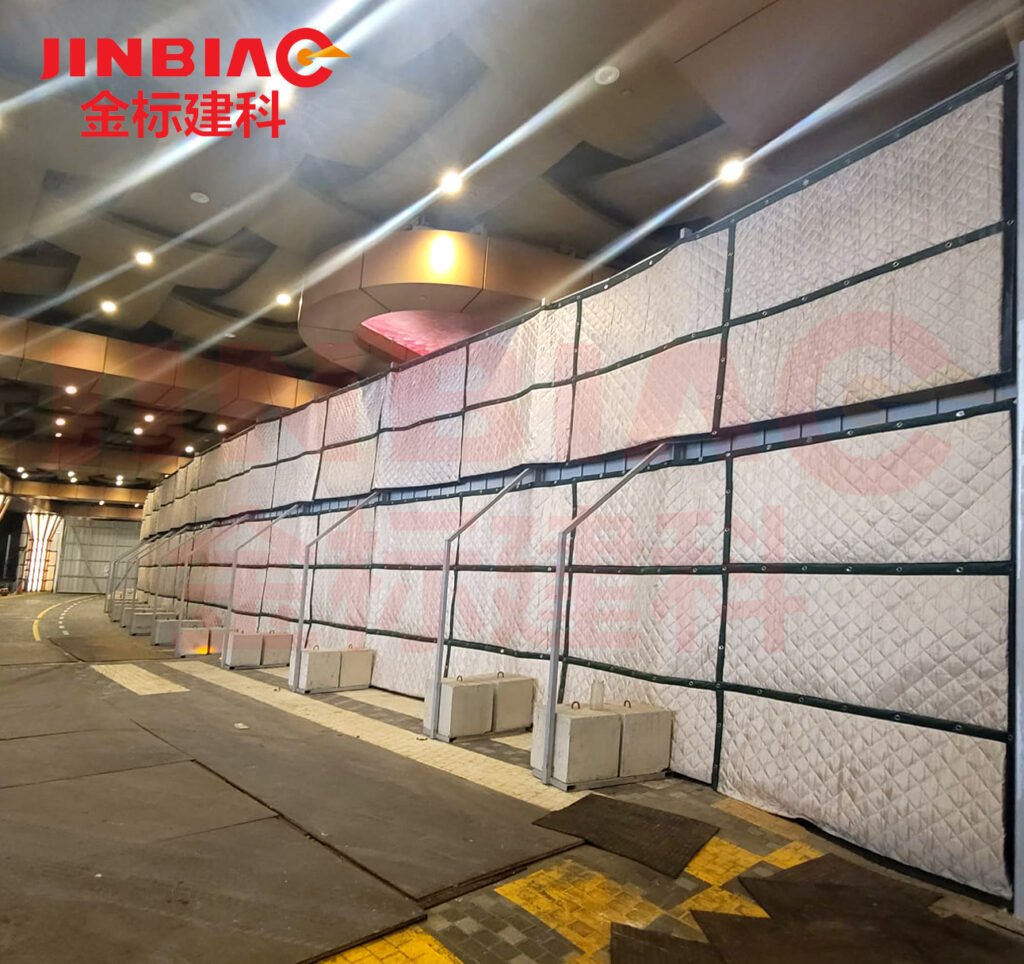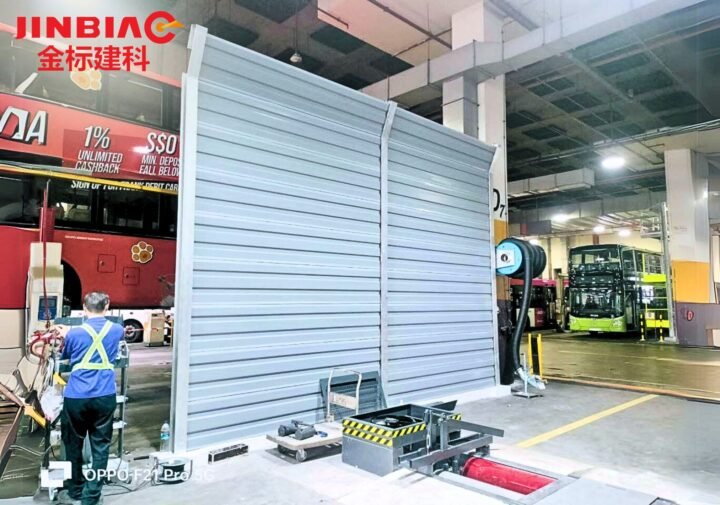
Noise pollution is a significant concern in the construction industry, with heavy machinery and equipment causing disturbances that can last for extended periods. To mitigate these effects, noise barriers have become an essential tool for maintaining a healthy acoustic environment.
When it comes to installing these barriers, construction professionals and environmental engineers face a critical decision: should they opt for the flexibility of portable noise barriers or the long-term stability of permanent structures?
Portable Noise Barriers
A portable noise barrier is designed to offer temporary shielding from high-decibel disturbances. They are typically lighter and have an easier setup than their permanent counterparts. These barriers are also highly effective at reducing noise levels and are often used in construction sites, music festivals, and outdoor events.
Characteristics and Uses
Portable noise barriers are often made of sound-absorbing materials encased in a durable, weather-resistant fabric. Their lightweight design and modular components allow for quick assembly and disassembly, making them ideal for situations where noise reduction needs to be rapidly deployed, adjusted, or repositioned.
Advantages
- Flexibility: The key advantage of portable barriers is their ability to adapt to changing work zones or be relocated without much logistical effort.
- Cost-Effectiveness: In terms of upfront costs, portable barriers are generally more affordable, particularly on projects where temporary noise reduction is mandated for short periods.
- Ease of Installation and Relocation: The assembly of these structures is often a simple process, requiring minimal labour and time. Consequently, they impose lower overheads related to installation and moving.
Disadvantages
- Noise Reduction Efficiency: Due to their temporary nature, portable barriers may not be as effective at noise reduction as permanent options.
- Durability: The materials used in these barriers, while sturdy, may not hold up over long periods compared to permanent noise barrier materials.
Permanent Structures
Permanent noise barriers are constructed to serve for extended periods, if not the duration of the building’s life. These can be wall-like structures that are part of the architectural design or stand-alone constructions.
Characteristics and Features
Permanent noise barriers are more solid and robust. They are typically made of materials like concrete, wood, or composite materials, providing a solid, immovable solution to noise disturbance.
Advantages
- Long-Term Effectiveness: These structures are designed to last, providing consistent noise reduction over the long haul.
- Soundproofing Capabilities: Materials like concrete have superior sound-absorbing properties, ideal for reducing noise pollution effectively.
- Aesthetics: Permanent barriers can be integrated into the architectural design, improving the site’s visual appeal and potentially adding value.
Disadvantages
- High Initial Cost: Constructing a permanent barrier involves significant material and labour expenses up front, which can be a prohibitive factor for some projects.
- Limited Flexibility: Once installed, these barriers are difficult to relocate, which can be a drawback in dynamic construction environments.
Comparative Analysis
When pitting portable noise barriers against permanent structures, several points of comparison come into play.
Effectiveness in Noise Reduction
Permanent noise barriers have the upper hand in noise reduction due to their robust design and sound-absorbing materials, providing a better barrier from consistent, high-decibel noise. However, for temporary noise attenuation or in cases where the reduction in decibels is not a crucial requirement, portable barriers can offer a reasonable level of protection.
Cost Considerations
Portability can be a significant cost-saving factor. While the initial investment for permanent barriers is higher, the ability to reuse portable barriers across multiple projects can potentially balance out the overall cost.
Environmental Impact
Permanent noise barriers are typically more favourable concerning environmental impact, as their durable nature and materials contribute to longer service life and less waste. Portable noise barrier, on the other hand, may require more frequent replacement, increasing the carbon footprint.
Maintenance Requirements
In the long run, permanent noise barriers may incur less maintenance and repair costs compared to portable options. However, the modular design of portable barriers can make individual panels easier to repair or replace as needed.
Conclusion
The decision to deploy a portable noise barrier or a permanent noise reduction structure is not straightforward. Both types have their distinct benefits and drawbacks, and the selection should be based on a thorough understanding of the project’s unique needs, timeline, and budget.
For one-off projects or where immediate installation is required, the agility and lower cost of portable barriers are compelling. On the other hand, long-term construction or projects in noise-sensitive areas may call for the permanence and superior noise reduction of fixed structures.
Ultimately, a balance between the temporary solutions’ adaptability and immediate results and the lasting benefits of permanent barriers may be the best approach, especially in the evolving landscape of construction and environmental standards. So, both types of noise barriers have their place in creating quieter and safer work environments, and choosing the right one depends on careful evaluation of all factors at play.
Hebei Jinbiao is a leading company in Noise Barrier products and Fencing products in Singapore. We guarantee to provide you with the most high-quality Sound Barrier and Fencing products along with our dedicated assistance. Do not hesitate to contact us. We are looking forward to helping you solve your noise issues, safety issues and protecting you from noise pollution as well as ensuring your safety.

